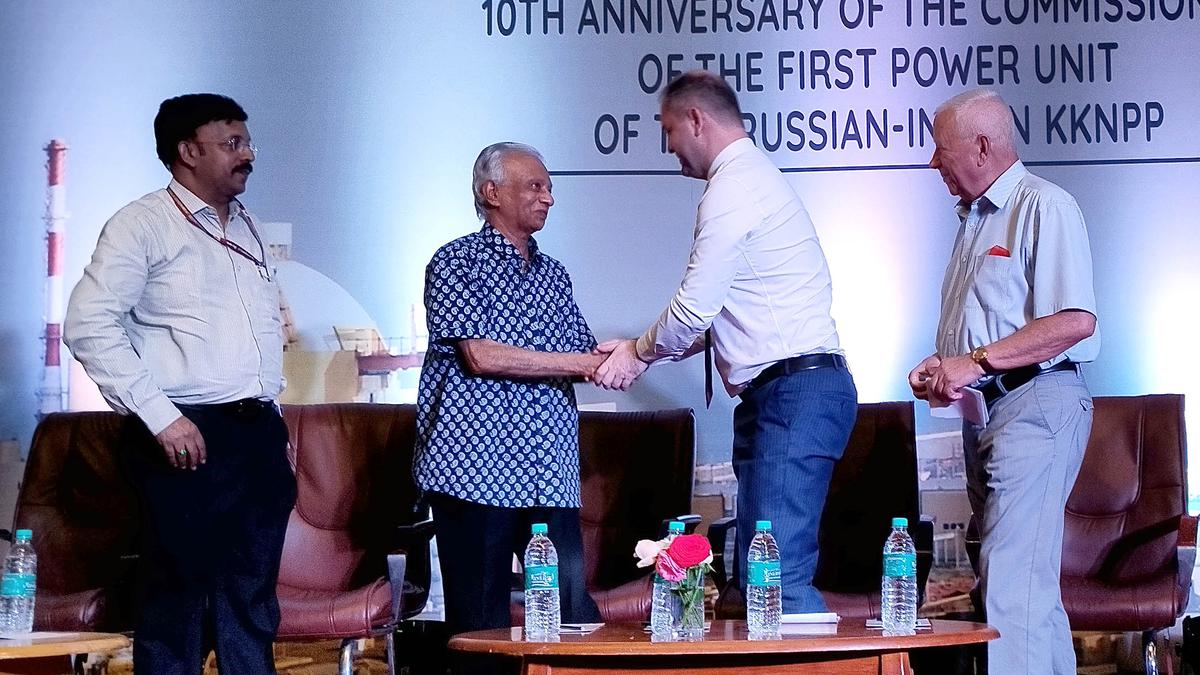
Tenth anniversary of the commissioning of the first unit of Kudankulam Nuclear Power Plant celebrated
The Hindu
Tenth anniversary of the commissioning of the first unit of Kudankulam Nuclear Power Plant celebrated
The Kudankulam Nuclear Power Project (KKNPP) is a shining example of the cooperation between India and Russia, T. K. A. Nair, former Principal Secretary to the Prime Minister, said on Thursday.
In the larger context of India’s relations with the rest of the world, Russia has been, from the time of Independence, a “steadfast friend,” he said.
Mr. T. K. A. Nair was addressing a function organised by the Russian House, Thiruvananthapuram, and the Russian Atomic Corporation Atomstroyexport to celebrate the tenth anniversary of the commissioning of the first unit of KKNPP and the 35th anniversary of the signing of the agreement between India and Russia on Peaceful Use of Nuclear Energy.
In the field of science and technology, the cooperation between India and Russia gave impetus to development in India. The five-year plans, with which India started its development story, drew its inspiration from the development plans of the erstwhile Soviet Union, he pointed out. The Bhilai steel plant, an important landmark in the infrastructure development in India, is another another shining example of Indo-Soviet cooperation, he said.
Additional Chief Secretary (Power) K. R. Jyotilal, Ivan Ivanisov, head of the Russian specialists’ group (first and second units, KKNPP), Yuri Lysenko, representative of Russian Atomic Corporation, and Honorary Consul of Russia in Thiruvananthapuram Ratheesh C. Nair spoke.

Hampi, the UNESCO-recognised historical site, was the capital of the Vijayanagara empire from 1336 to 1565. Foreign travellers from Persia, Europe and other parts of the world have chronicled the wealth of the place and the unique cultural mores of this kingdom built on the banks of the Tungabhadra river. There are fine descriptions to be found of its temples, farms, markets and trading links, remnants of which one can see in the ruins now. The Literature, architecture of this era continue inspire awe.

Unfurling the zine handed to us at the start of the walk, we use brightly-coloured markers to draw squiggly cables across the page, starting from a sepia-toned vintage photograph of the telegraph office. Iz, who goes by the pronouns they/them, explains, “This building is still standing, though it shut down in 2013,” they say, pointing out that telegraphy, which started in Bengaluru in 1854, was an instrument of colonial power and control. “The British colonised lands via telegraph cables, something known as the All Red Line.”

The festival in Bengaluru is happening at various locations, including ATREE in Jakkur, Bangalore Creative Circus in Yeshwantpur, Courtyard Koota in Kengeri, and Medai the Stage in Koramangala. The festival will also take place in various cities across Karnataka including Tumakuru, Ramanagara, Mandya, Kolar, Chikkaballapura, Hassan, Chitradurga, Davangere, Chamarajanagar and Mysuru.








